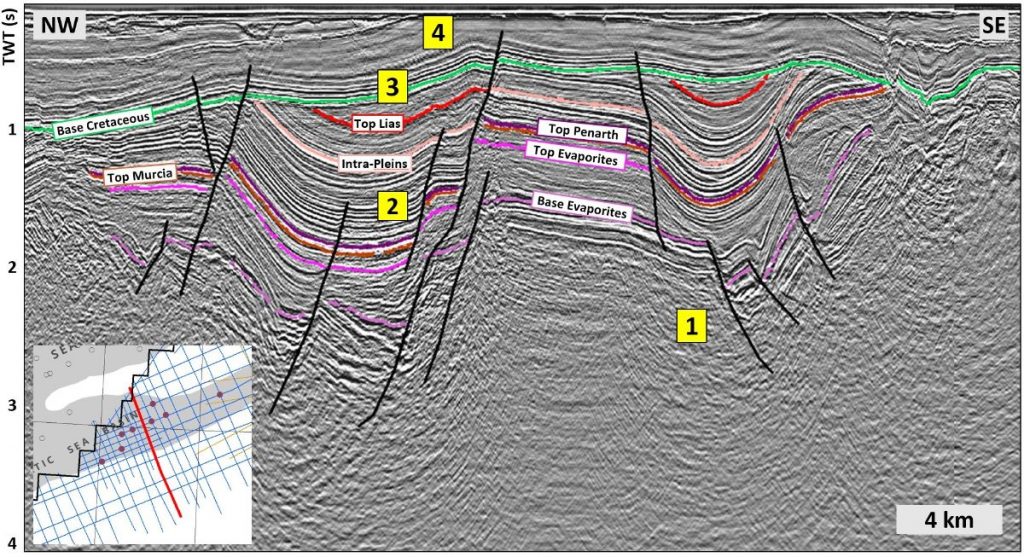
The 70’s and 80’s saw a surge of exploration excitement in the Celtic Sea. While the North Celtic Sea Basin (NCSB) provided several fruitful hydrocarbon discoveries (e.g. Kinsale Head and Ballycotton fields), the South Celtic Sea Basin (SCBS) became a victim of several dry holes and dwindling enthusiasm.
Was the chase for oil in the SCSB a vain attempt? Or does the OGA’s 2016 high-resolution 2D seismic provide the crucial master key in unlocking hidden potential? Using our extensive experience of all the Irish basins alongside the well and seismic data package released by the OGA, Merlin has taken a fresh look at the UK SCSB.
The SCSB lies between the NCSB and St. Georges Channel Basin. Accommodation in the SCSB was initially created through localised reactivation of the Hercyinian thrust zone. The SCSB then experienced three main phases of tectonism to create todays structural configuration. New high-resolution 2D data brings to life the stratigraphic and structural features of the SCSB, including; Devonian-Carboniferous basement (1), Late Triassic – Jurassic growth faulting (2), Late Jurassic – Early Cretaceous uplift and erosion (3), and Oligocene – Miocene inversion (4).

The SCSB has proven reservoir sequences in the Triassic “Sherwood Group” and the fluvial Cretaceous Wealden Group and Greensand Formation. The SCSB also has a potential seal in the Triassic mudstone/evaporite succession of the Murcia Mudstone Group. The component of the petroleum system that remains elusive and unproven, is a viable source rock.
So what are the options for a sourcing the SCSB? The proximity of the Variscan front means Carboniferous source rocks are potentially absent or poorly preserved. Our work indicates much of the Upper Jurassic stratigraphy was removed by basin-wide uplift and erosion at the Aptian unconformity. So, it all comes down to the Lower Jurassic.
Two wells in the area show promise, in the form of a Lower-Middle Jurassic interval, with TOC values up to 4.3%. These wells were drilled on shallow structures in the footwall blocks, where a potential source interval is immature. Thick Lower-Middle Jurassic growth sequences can be seen on seismic, in the hanging-walls, and here the interval may be sufficiently buried for hydrocarbon generation. If this is the case, the source rock potential might be restricted to the main basin depocentre, where the new high-resolution 2D seismic is perfectly placed to identify any potential prospectivity.
The southern part of the St. Georges Channel Basin exhibits similarities to the SCSB in terms of basin structure and Mesozoic stratigraphy and as such the 1994 Dragon discovery provides a key basin analogue. At Dragon, thick, downthrown growth sequences in the Lower Jurassic, are sufficiently buried to mature source rocks. Whilst on a larger scale to the SCSB, this indicates that a working petroleum system may be sourced from these growth sequences. Could this be the key to understanding the South Celtic Sea Basin?
To find out more or to access Merlin’s interpreted data package and report, please contact us.



